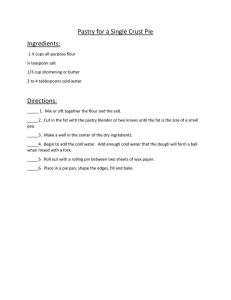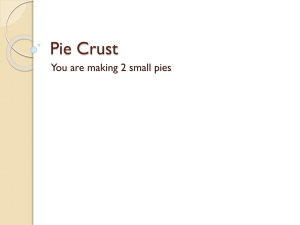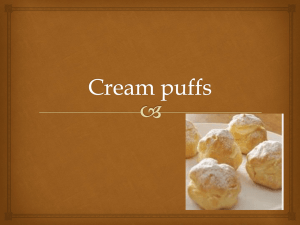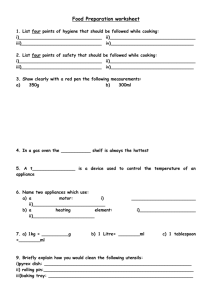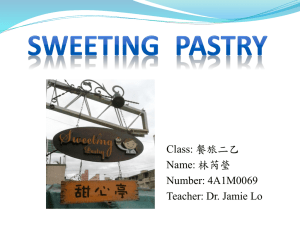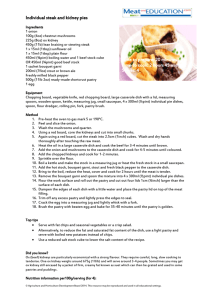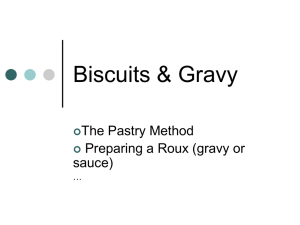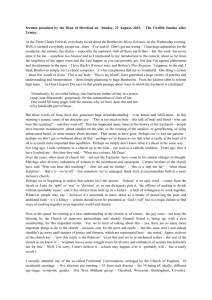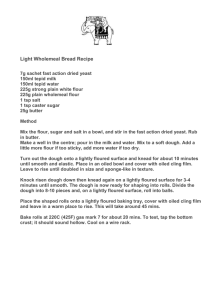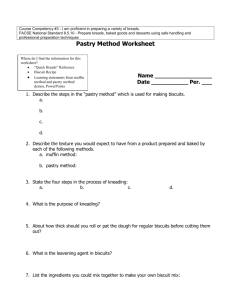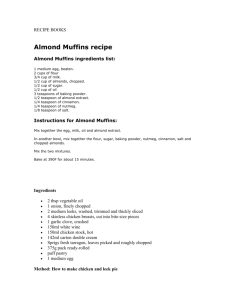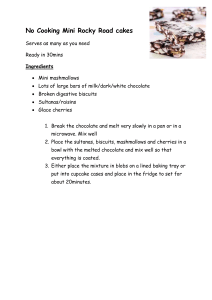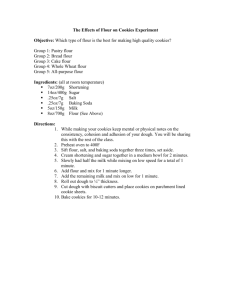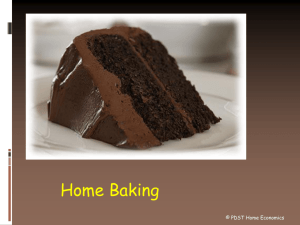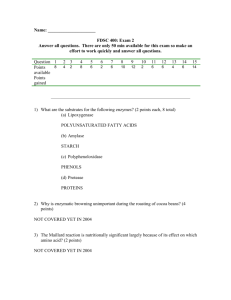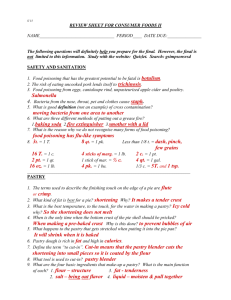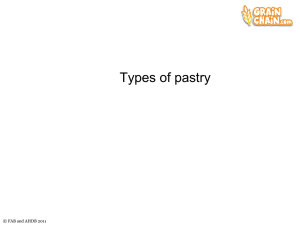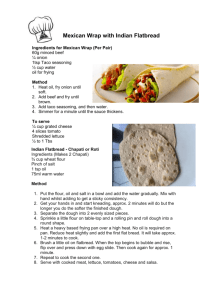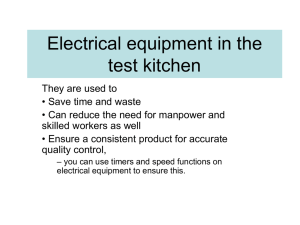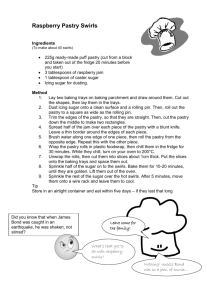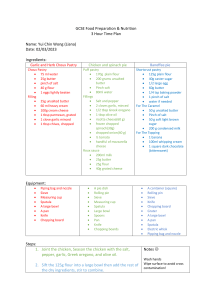Add 2
advertisement
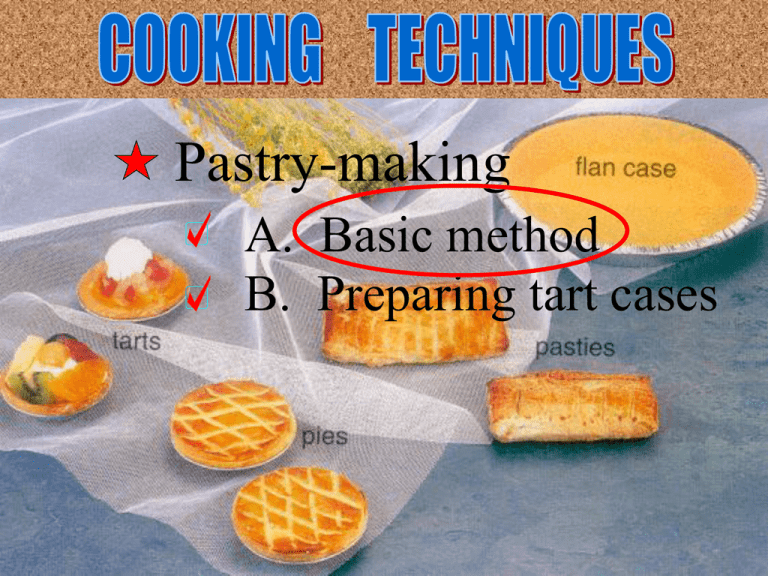
Pastry-making A. Basic method B. Preparing tart cases Sieve the flour and salt into a mixing bowl Reasons: To add in air. To blend the ingredients together. Add the fat to the flour. Cut it into small pieces with a round-ended knife. Reasons: It is easier to rub the fat into the flour. Use the fingertips to rub the fat into the flour. Lift the hands high while rubbing. Reasons: The fingertips are the coolest parts of our hand. Using them can prevent the fat from melting quickly. To add in more air. Add 2 - 3 tbsp ice water. Stir and blend the mixture into hard dough with a roundended knife. Reasons: Too much water will make the dough sticky. Not enough water will make it crack. Sprinkle some flour on the table and knead the dough lightly until it is smooth. Then put it in a refrigerator for a while if possible. Reasons: Over-kneading will make the pasty hard. Dust the rolling pin with flour and roll the pastry out to a suitable thickness. Use it as required. Reasons: To prevent the dough from sticking to the pin. Pastry-making A. Basic method B. Preparing tart cases Cut the pastry of the required thickness with a pastry cutter. plain cutter • for savoury tarts fluted cutter • for sweet tarts Line pastry rounds onto a patty tin. Press in the pastry rounds lightly. Make holes with a fork. Points to note when making pastry Keep the room cool. Keep our hands, all utensils and ingredients cool. Avoid over-kneading. Roll forwards quickly with short, light movement. If possible, relax the pastry in a refrigerator before baking. Bake in a preheated oven of a suitable temperature. Reference web page www.deliaonline.com/cookeryschool/equipment/e_0000000531.asp www.hub-uk.com/tallytip01/tip0022.htm
